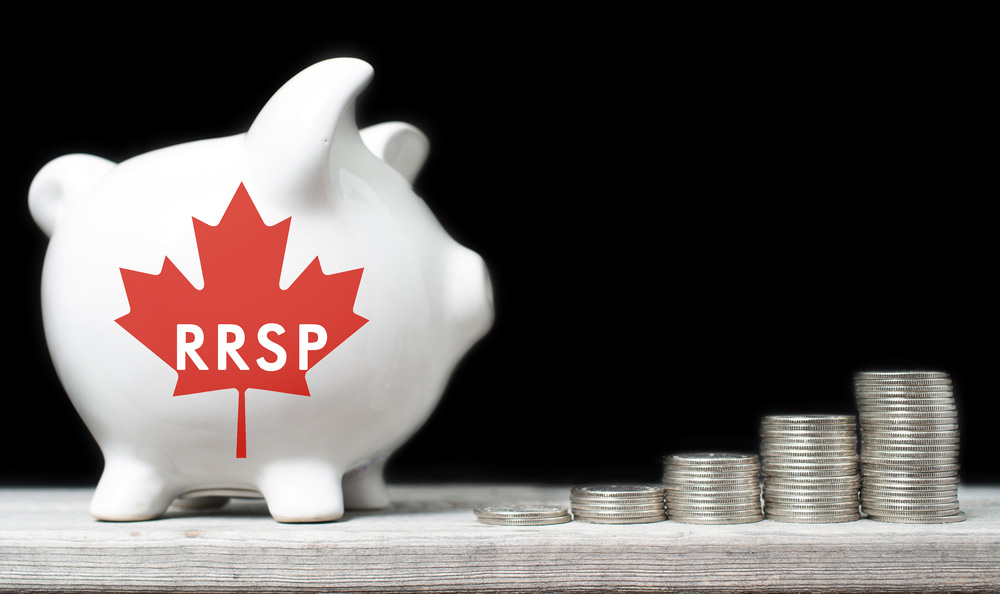The article “How To Pay Less Tax On Your RRSP Withdrawals” was originally published on MoneySense on April 5, 2016.
Shaune is looking for tax-efficient ways to draw down on his and his wife’s RRSPs in retirement. What should he do?
Q: My wife has two RRSP accounts in her name. One is a spousal which I no longer contribute to and one is personal in her name. I have my own personal RRSP account.
I have one defined benefit pension plan from which I am collecting income from while I still work full time. When I retire at age 65, I will then be collecting from two separate defined benefit pension plans.
At that time, my wife and I will be collecting our Canada Pension and Old Age Security.
Our RRSP plans are completely DRIP-oriented and consist entirely of well-established blue chip stocks that are split 50% Canadian publicly traded companies and 50% US publicly traded companies. Our plan is to start the withdrawals from our RRSPs at age 69 or 70.
What would be the most tax advantaged means to withdraw the funds? For example, can we transfer the funds in kind from our three RRSP accounts within the same discount brokerage to a cash account in our individual names and collect the dividend income in cash as a means of cash flow once we retire?
— Shaune
A: Flipping the switch from accumulation to decumulation is no easy task, Shaune. There is definitely more information out there on saving for retirement than funding it.
It sounds like your wife may already be retired. If she is, you may want to consider beginning withdrawals from her RRSP now. Her income will likely rise in the future because you will begin your second pension and half of that can be split with her on your tax filings, plus she will have her CPP, OAS and RRIF withdrawals as well. If you can begin to draw on her RRSP savings now while her income and her tax rate are low, it may help keep her in a lower tax bracket during her 70s and 80s by drawing down a bit now during her 60s.
I use retirement planning software to try to model the optimal way to draw down on someone’s retirement assets, as well as to determine sustainable spending and required rate of return in retirement. While counterintuitive, drawing down on RRSPs earlier and paying more tax sooner can sometimes mean less tax payable over the course of your life, Shaune. This is true especially for those with higher incomes in retirement – like from defined benefit pension plans – who may be at risk of having OAS benefits clawed back and reduced.
In your wife’s case, just make sure that you are aware of the attribution rules. If she withdraws from a spousal RRSP that you have contributed to in the past three years, the withdrawal will be attributed back to you and taxed on your tax return instead. Given you are working and your income is higher than hers, that’s not what you want. So consider drawing from her personal RRSP instead if you have contributed to her spousal RRSP in the past three years.
I assume that you are splitting your pension income on your tax returns, so that 50% of your pension is taxable to your wife at her lower tax rate. This is allowable for defined benefit pension income when you are 55 or older.
Your plan to withdraw from your RRSPs in kind and have the investments transferred into a cash account suggests that you don’t think you’ll need the cash to fund your spending, Shaune. Perhaps your defined benefit, CPP and OAS pensions will take care of all of your cash flow needs. If this is the case, you’ll probably want to allocate your withdrawals to maxing out your TFSA accounts first and foremost.
From there, you can minimize your tax by ensuring that you are holding the right investments in the right accounts. I would opt for Canadian stocks over U.S. stocks in your TFSAs, as U.S. dividends will have 15% withholding tax otherwise. You will also generally pay less tax on Canadian dividends than U.S. dividends in your cash account, though the effective tax rate may be similar if you are subject to OAS clawback due to a high income and the way that Canadian dividends are grossed up on your tax return.
Depending on your family situation and your estate planning goals, using funds from your cash account to make gifts to your kids or grandkids, fund RESP contributions or establish a family trust may be worthwhile strategies to consider.
So while there is no playbook for how best to draw down on your retirement assets, there are some generalities that are worth considering. Look to minimize lifetime taxes, family taxes and pay the least tax on your portfolio based on where you hold assets.
Jason Heath is a fee-only, advice-only Certified Financial Planner (CFP) at Objective Financial Partners Inc. in Toronto, Ontario. He does not sell any financial products whatsoever.

